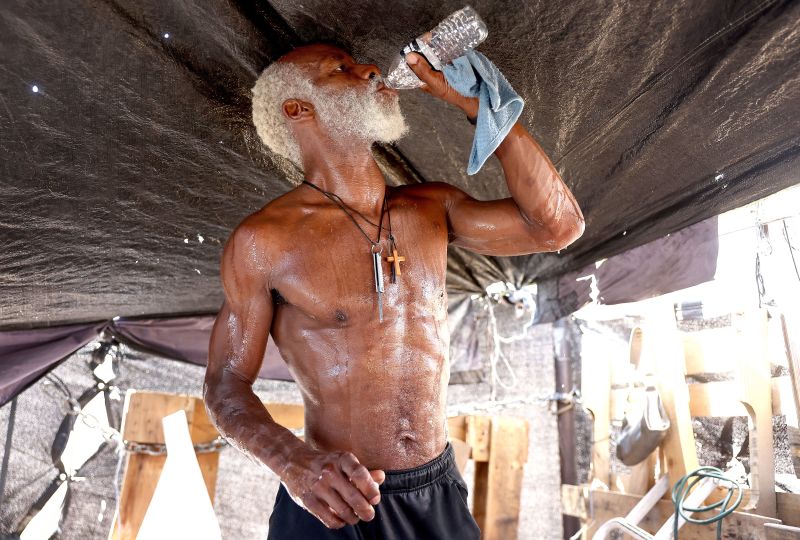
‘Heat health emergency’: Nearly half the US at risk as dangerous heat expands and intensifies in the Northeast
Heat is intensifying for millions of people in the Northeast and mid-Atlantic Thursday, creating a “heat health emergency” as nearly half of the country bakes in dangerously high temperatures.
Around 150 million people from coast to coast are under heat alerts Thursday after extreme heat expanded into the highly populated I-95 corridor, bringing the highest temperatures of the year there.
The heat also won’t let up in the South and Southwest, where heat-related deaths are climbing, emergency rooms are filling with heat-related burn victims and even animals are falling victim to heat illness.
Live updates: The latest news on heat and extreme weather
Heat indexes – a measure of what the temperature feels like when accounting for relative humidity – are expected to top 100 degrees Fahrenheit across many areas in the Midwest, mid-Atlantic and Northeast through Friday.
These kinds of temperatures can be deadly – heat kills more people in an average year than hurricanes and tornadoes combined – so both Boston and Philadelphia have declared heat emergencies, opening cooling centers and warning residents to check on the elderly and others most vulnerable to heat illness.
“Let’s be clear: heat can kill,” New York City Mayor Eric Adams said on Twitter Thursday. “This is dangerous. Take precautions.”
New York has also opened cooling centers as nearly 9 million residents across the nation’s largest city are under an excessive heat warning through 9 p.m. Friday. Temperatures in the mid-90s combined with high dew points will drive up the heat index and make it feel as hot as 105 degrees. Those temperatures will feel even hotter for millions of New Yorkers in intense urban heat island hot spots.
The temperatures are also testing infrastructure. PJM Interconnection – the nation’s largest power grid system – has declared an emergency alert. The move activates all systems to be online, including those with planned outages.
PJM coordinates electricity for more than 65 million people in all or parts of Delaware, Illinois, Indiana, Kentucky, Maryland, Michigan, New Jersey, North Carolina, Ohio, Pennsylvania, Tennessee, Virginia, West Virginia and Washington, DC, according to its website.
And high heat has already disrupted work on some major US oil refineries, one of several factors driving higher gas prices.
Here are some other notable places bracing for and dealing with the severe heat:
Possible severe storms threaten Northeast megalopolis
The Northeast, mid-Atlantic and upper Midwest face an additional weather threat Thursday: strong-to-severe storms that could disrupt travel and knock out power amid the sweltering heat.
Brief and isolated tornadoes can’t be ruled out, but the Level 2 out of 5 threat is primarily for damaging winds that could affect the entire I-95 corridor from Washington, DC, to Boston. The storms should fire up in the early afternoon into the evening and could affect the afternoon rush hour commute, so also look out for flooding on roadways.
Parts of northern Wisconsin and eastern Minnesota, including Duluth, Minnesota, are under a Level 3 out of 5 threat Thursday for damaging storms that could produce wind gusts as high as 75 mph along with large hail. The Twin Cities faces a Level 2 out of 5 threat, also for strong winds and hail. Wind gusts that strong could easily down power lines and make for a miserably hot powerless evening.
